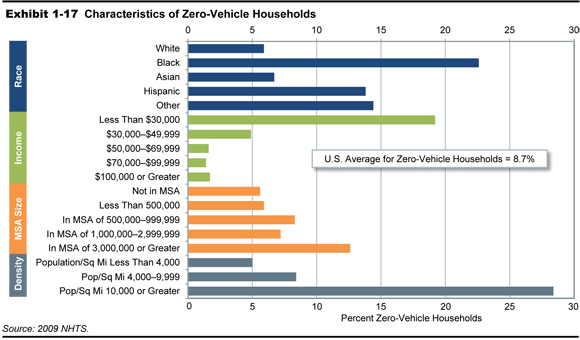Who makes up “car-free” households?
By Melinda Musser, Communications & Marketing Manager
New Republic reports what we’ve been hearing for a while now, millennials (those born after 1981) are increasingly abandoning cars for bikes, public transit, and car-share opportunities. When you zoom out and look at the nation’s zero-vehicle households as a whole, the picture is a good reminder that the language of “car-free” that we sometimes use in bike advocacy can mask the fact that it’s really only a “choice” for some.
“Zero-vehicle households encompass two Americas, one unusually rich and one unusually poor. Roughly 4% of those households earn more than $80,000 annually, a wealthy group concentrated in and around New York. Yet 70% of U.S. zero-vehicle households earn less than $30,000 per year.”
Rather than “car-free” being a choice, it’s a decision based on economic necessity.
Here’s some more interesting stats from the Federal Highway Administration on zero-vehicle households:
- They are disproportionally Black and Hispanic. The share of all U.S. households without a vehicle is 8.7 percent; this percentage goes up to 13.8 percent for Hispanic households and 22.6 percent for Black households.
- They are smaller than average households and have lower incomes. Of all zero-vehicle households, 70 percent have incomes less than $30,000.
- They are typically poorer than average households, but not in all cases. Sixty percent of zero-vehicle households make less than $20,000 annually, as compared to 16 percent of vehicle-owning households.
- Of zero-vehicle U.S. households, 4.3 percent earn more than $80,000 a year, and the majority of this group lives in the New York Metro Region.
- Whether at the low or high end of the income scale, zero-vehicle households tend to be in the largest metro areas with populations of 3 million or more. Zero-vehicle households make up 8.7 percent of all U.S. households, but they make up 12.6 percent of the households in these largest metro areas. In other words, 51 percent of all zero-vehicle households live in areas of 3 million or more, compared to 35 percent for households with one or more vehicles.
